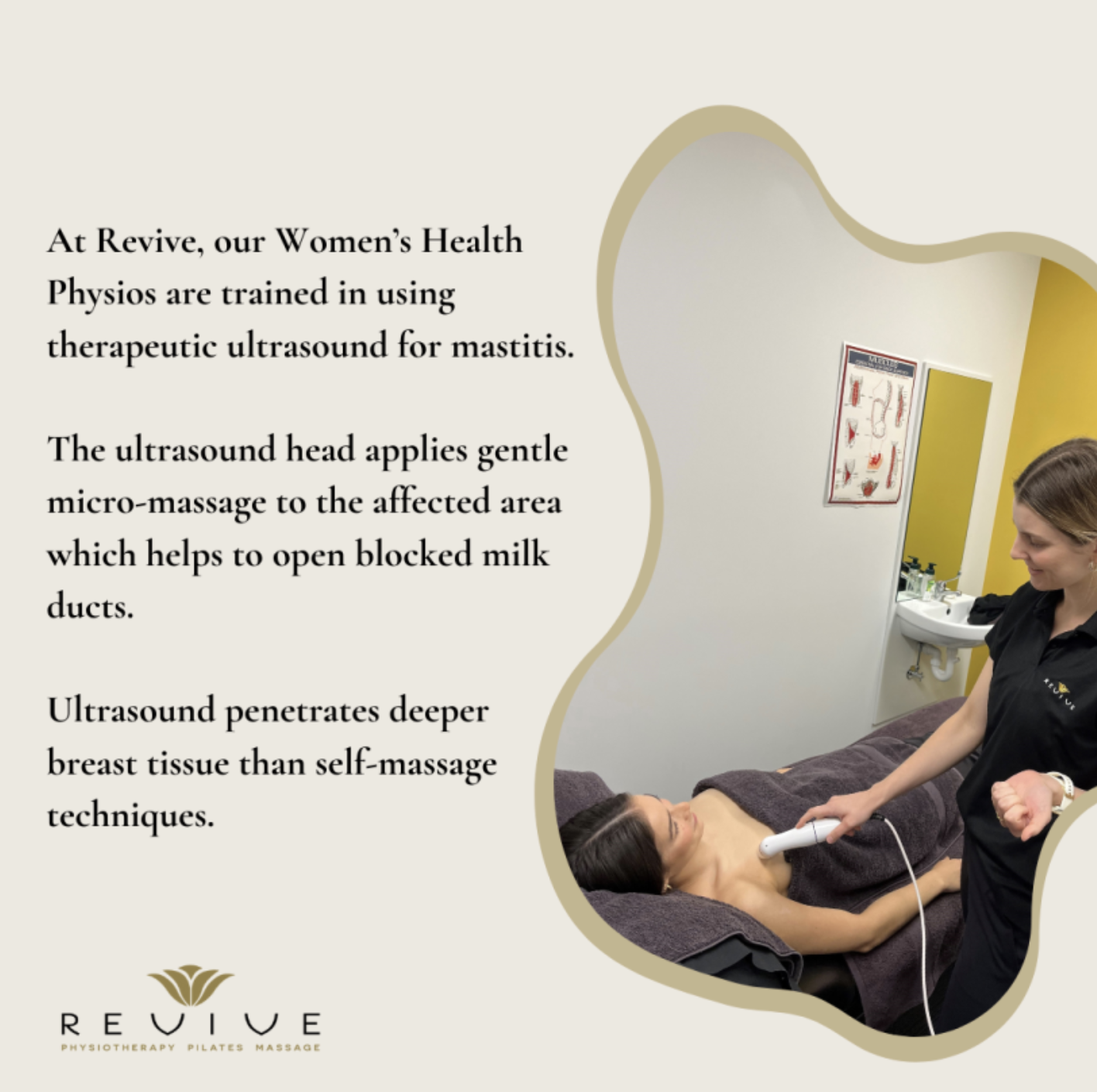Mastitis
Managing Mastitis with Physiotherapy: A Holistic Approach for Breastfeeding Mums
Mastitis is a common condition that affects many breastfeeding mothers. Physiotherapy offers a holistic, non-invasive way to manage mastitis. It not only provides relief from pain and discomfort but also supports the healing process and helps mothers continue breastfeeding comfortably.
What Causes Mastitis?
Mastitis typically develops when a milk duct becomes blocked, leading to milk stasis and creating an environment for bacterial growth. If not addressed early, this can lead to infection and worsening symptoms, making it difficult to continue breastfeeding. Many of our patients report interruptions to feeding - such as when mum or baby is ill, =travelling or other busy or stressful schedules - can trigger mastitis.
Early symptoms include reduced milk flow, and tightness or tenderness in the breast. This can progress to redness and warmth in the breast, and flu-like symptoms, including fatigue, headaches, and fever.
How Physiotherapy Can Help

Physiotherapy focuses on relieving symptoms, clearing blocked ducts, and improving overall breast health. A range of techniques may be used as part of a treatment plan, including:
1. Therapeutic Ultrasound
Ultrasound therapy uses high-frequency sound waves to stimulate deep tissue healing and to deliver heat deep into the tissue. In mastitis, this helps reduce inflammation, improve circulation, and relieve pain in the affected breast. It’s a gentle, non-invasive treatment applied by a physiotherapist using a handheld device. Many women report noticeable improvements after just one to three sessions.
2. Gentle Massage & Manual Milk Expression
Targeted massage can help to clear blocked ducts and reduce local tightness. After ultrasound therapy, your physiotherapist may encourage you to feed your baby or manually express milk straight away, as the treatment helps loosen the blockage and promote better milk flow
3. Heat and Cold Therapy
- Heat before feeding can help relax the breast tissue, reduce pain, and promote milk flow.
- Cold packs after feeding can reduce swelling, pain, and inflammation.
4. Posture and Breastfeeding Positioning
Excessively rounded breastfeeding posture can contribute to mastitis by putting unnecessary strain on the breast. A physiotherapist can assess and suggest optimal feeding positions to support milk flow and reduce discomfort.
5. Targeted Exercises and Stretches
Exercises designed to improve mobility and strengthen the muscles around the chest and shoulders can support better posture and reduce the risk of future blockages. These may also help reduce general soreness many women report from prolonged breastfeeding.
6. Referral to General Practitioner
Depending on the severity of your symptoms your physiotherapist may suggest you visit your General Practitioner. While most women find their mastitis will resolve with time, for some it can develop into an abscess if left untreated. Your GP may prescribe you with antibiotics or send you for a diagnostic ultrasound if they feel it is required. Unless specifically advised against, you can still receive physiotherapy care for your mastitis while on antibiotics.
Early Intervention is Key
If you're experiencing symptoms of mastitis, don't wait. Early physiotherapy treatment can reduce pain and speed up recovery. Contact our clinic to book an appointment and get the support you need
|
Understanding Ultrasound Therapy Ultrasound therapy works by emitting high-frequency sound waves that penetrate breast tissue, creating a gentle heat or micro-massage effect. This process helps:
Benefits of Ultrasound for Mastitis
|
You may benefit from physiotherapy for mastitis if you’re experiencing:
|
.svg)